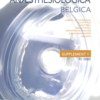Prognostication of long-term outcomes after aneurysmal subarachnoid hemorrhage: external validation of the FRESH score
Subarachnoid Hemorrhage, Aneurysmal, Prognosis, Patient Outcome Assessment, Validation Study
Published online: Mar 21 2023
Abstract
Background and Objectives: Aneurysmal subarachnoid hemorrhage (aSAH) affects 6.3 persons per 100.000 annually. Patient outcomes still vary greatly. Prognostication remains challenging and both Hunt & Hess (H&H) and World Federation of Neurosurgical Societies (WFNS) grading scales lack long term accuracy. The “Functional Recovery Expected after Subarachnoid Hemorrhage“ (FRESH) scale, incorporating 4 variables - admission H&H score, Acute Physiology And Chronic Health Evaluation 2 (APACHE 2) score, patient age and aneurysmal rebleed within 48 hours – has been reported to predict long-term outcome. In this retrospective study, we assessed the external validity of this scale.
Methods: We retrospectively analyzed all intensive care unit (ICU) aSAH patients between Jan 1st and December 31st, 2017. 69 patients were identified. Patient baseline characteristics (age, sex, Glasgow Coma Scale (GCS), H&H, WFNS, APACHE 2 score, presence of rebleed) and outcome measures were obtained. FRESH scores were calculated accordingly. Functional outcome after 1 year was measured using the modified Rankin Scale (mRS). mRS was dichotomized into good (mRS 0-3) and poor (mRS 4-6) outcome to calculate the area under the curve (AUC) of the receiver operating characteristic (ROC) curve.
Results: All patients underwent endovascular aneurysm treatment. Poor outcome was observed in 20 patients (30%); one year mortality was 24 % (16 patients). We achieved an AUC of 89% for discriminating between good and poor outcomes 12 months after hospital admission. Goodness-of-fit was calculated to be 36% using Nagelkerke R2. Sensitivity and specificity were 60% and 90% respectively.
Conclusion: In our retrospective analysis, the FRESH score performed well in the prediction of poor outcome (mRS 4-6) one year after aSAH. However, FRESH score calculations are cumbersome and prone to error.
